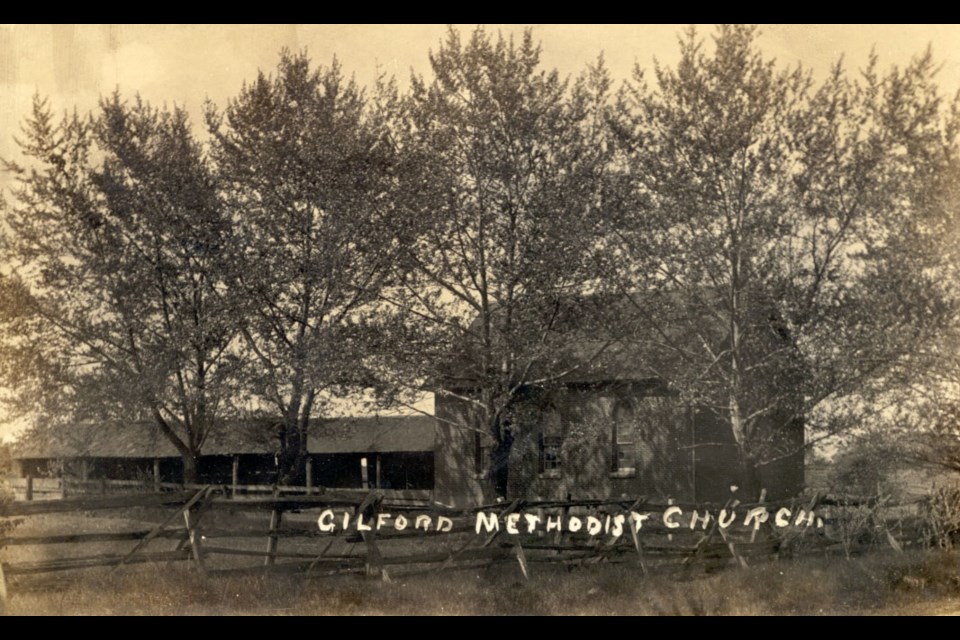Postcard Memories is a series of historic views, stories, and photos of Innisfil and the area, a trip down memory lane on a Saturday morning.
Gilford Wesleyan Methodist Church
Spirituality played an important role in early Ontario communities. Settlers placed faith in God that if they worked hard and prayed fervently, their farms would be bountiful and all would be well.
The Methodist congregation in Gilford began 160 years ago, in 1861, when the village was still a flyspeck and new. Joseph Robinson, head sawyer at Thomas Maconchy’s Gilford sawmill and a devout Methodist, began conducting services at the mill. Facilities were terribly primitive, with logs used for benches and a stump as a pulpit. Something better was needed.
Maconchy, widely considered the founder of Gilford, stepped up by donating land and wood from his mill for the construction of a church. Labour was provided by congregants free of charge in a raising ‘bee.’ When the church was opened on Oct. 29, 1864, the entire village celebrated as Maconchy had insisted upon donating the land that all Protestant denominations be allowed to use the church.
Maconchy was aware of his stature in the community. Whereas most pews were straight-backed and hard so one didn’t get comfortable enough to doze during sermons, the pews reserved for the Maconchy family were plushily cushioned and had footrests. Naturally, the community celebrated when the church held its first service on Oct. 29, 1864.
Almost 160 years have passed since. The church, now the Gilford United Church, still stands. If one looks at pictures of yesteryear and today, the church looks remarkably similar. There are obvious changes, though. An addition was built onto the back and the row of poplars planted when the church opened are gone. The most notable difference is the absence of the expansive drive shed — where horses would have been stabled — at rear, which was torn down in 1953.



